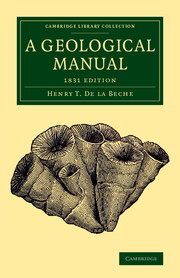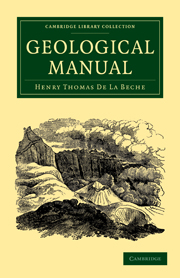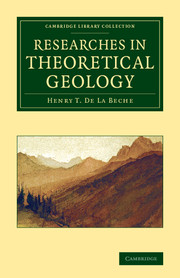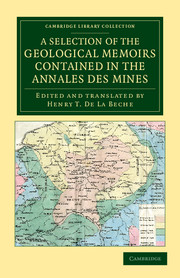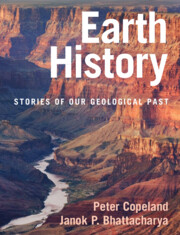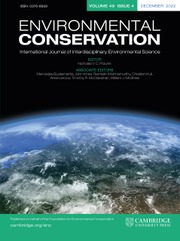A Geological Manual
Sir Henry Thomas De la Beche (1796–1855) served as president of the Geological Society from 1847 to 1849, having contributed greatly to the development of geological science and surveying in the first half of the nineteenth century. He was also instrumental in the establishment of the Museum of Practical Geology in London. Reissued here in its 1831 first edition (which Darwin had with him aboard the Beagle), this work sought to help students to grasp the fundamentals of a rapidly advancing science. The first section considers the Earth's shape, density, temperature and other characteristics. The next part includes discussion of beaches, volcanos, and coastal processes. De la Beche then presents descriptions of various rock types, reflecting the state of contemporary geological knowledge. Highly successful, the book went through two further English editions; the expanded third edition is also reissued in this series.
Product details
November 2014Paperback
9781108075121
554 pages
216 × 140 × 31 mm
0.7kg
105 b/w illus.
Available
Table of Contents
- Preface
- Section I:
- 1. Figure of the Earth
- 2. Density of the Earth
- 3. Superficial distribution of land and water
- 4. Saltness and specific gravity of the sea
- 5. Temperature of the Earth
- 6. Temperature of springs
- 7. Temperature of the sea and lakes
- 8. Temperature of the atmosphere
- 9. Valleys
- 10. Changes on the surface of the globe
- 11. Classification of rocks
- Section II:
- 12. Degradation of land
- 13. Delivery of detritus into the sea
- 14. Action of the sea on coasts
- 15. Shingle beaches
- 16. Sandy beaches
- 17. Tides
- 18. Currents
- 19. Transporting power of tides
- 20. Transporting power of currents
- 21. Active volcanos
- 22. Extinct volcanos
- 23. Mineral volcanic products
- 24. Volcanic dykes, etc.
- 25. Earthquakes
- 26. Gaseous exhalations
- 27. Deposits from springs
- 28. Naphtha and asphaltum springs
- 29. Coral reefs and islands
- 30. Submarine forests
- 31. Raised beaches and masses of shells
- 32. Organic remains of the modern group
- Section III:
- 33. Erratic blocks and gravel
- 34. Ossiferous caverns and osseous breccia
- Section IV:
- 35. Supracretaceous (tertiary) group
- 36. Volcanic action during the supracretaceous period
- Section V:
- 37. Cretaceous group (chalk and green sand)
- 38. Wealden rocks
- Section VI:
- 39. Oolitic group
- Section VII:
- 40. Red sandstone group
- Section VIII:
- 41. Carboniferous group
- Section IX:
- 42. Grauwacke group
- Section X:
- 43. Lowest fossiliferous group
- Section XI:
- 44. Inferior stratified or non-fossiliferous rocks
- Section XII:
- 45. Unstratified rocks
- Section XIII:
- 46. On the mineralogical differences in contemporaneous rocks
- 47. On the elevation of mountains
- 48. On the occurrence of metals in rocks
- Appendix
- Index.

